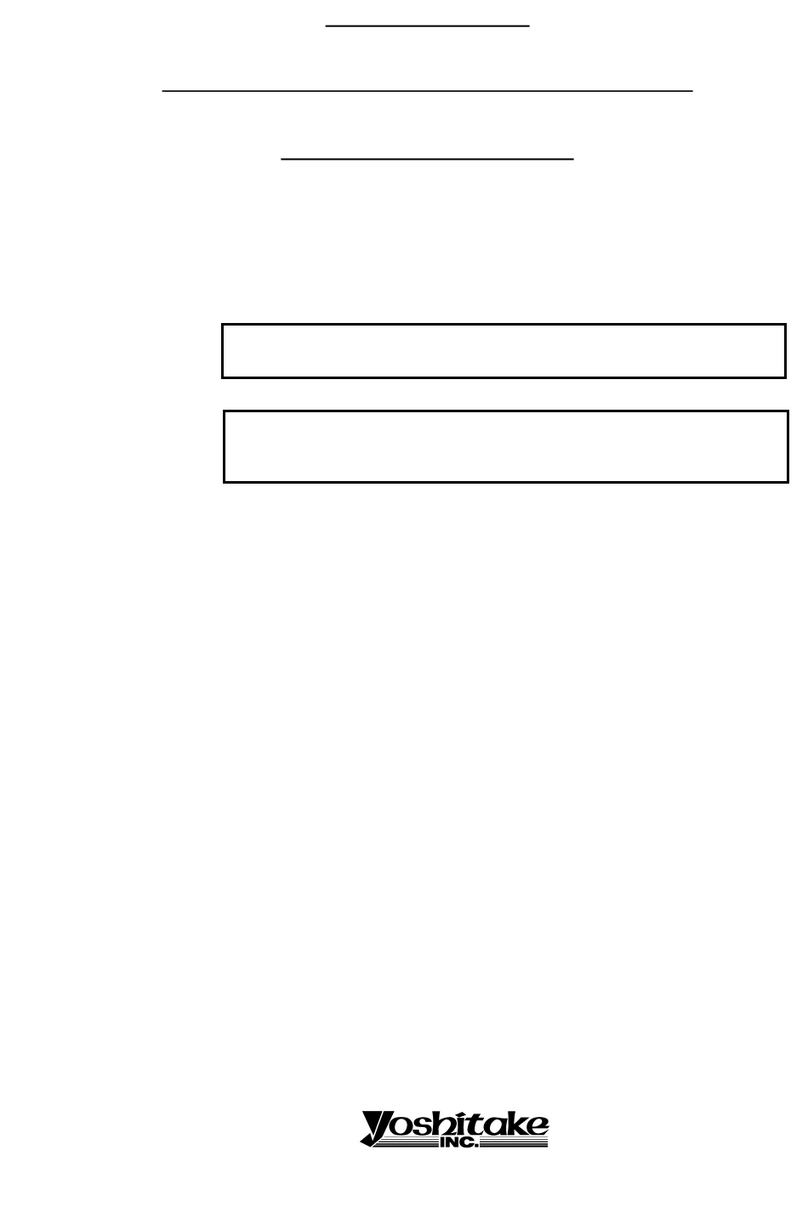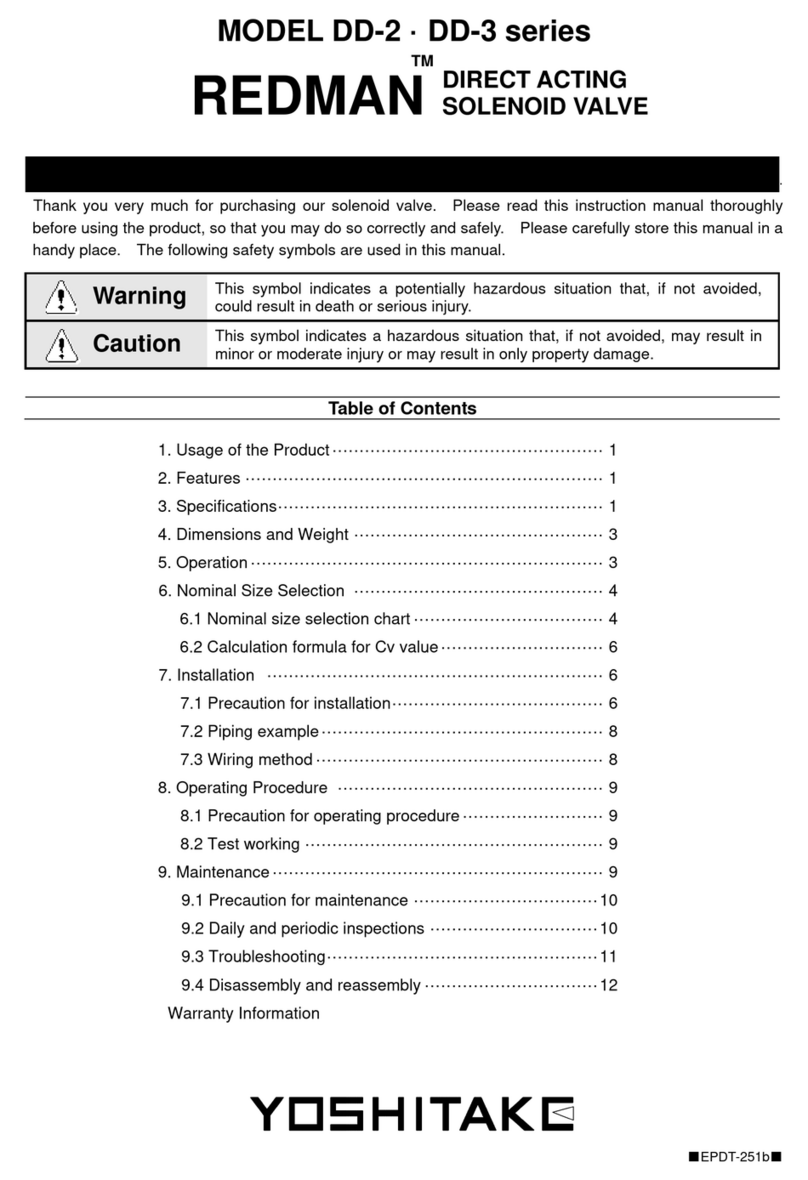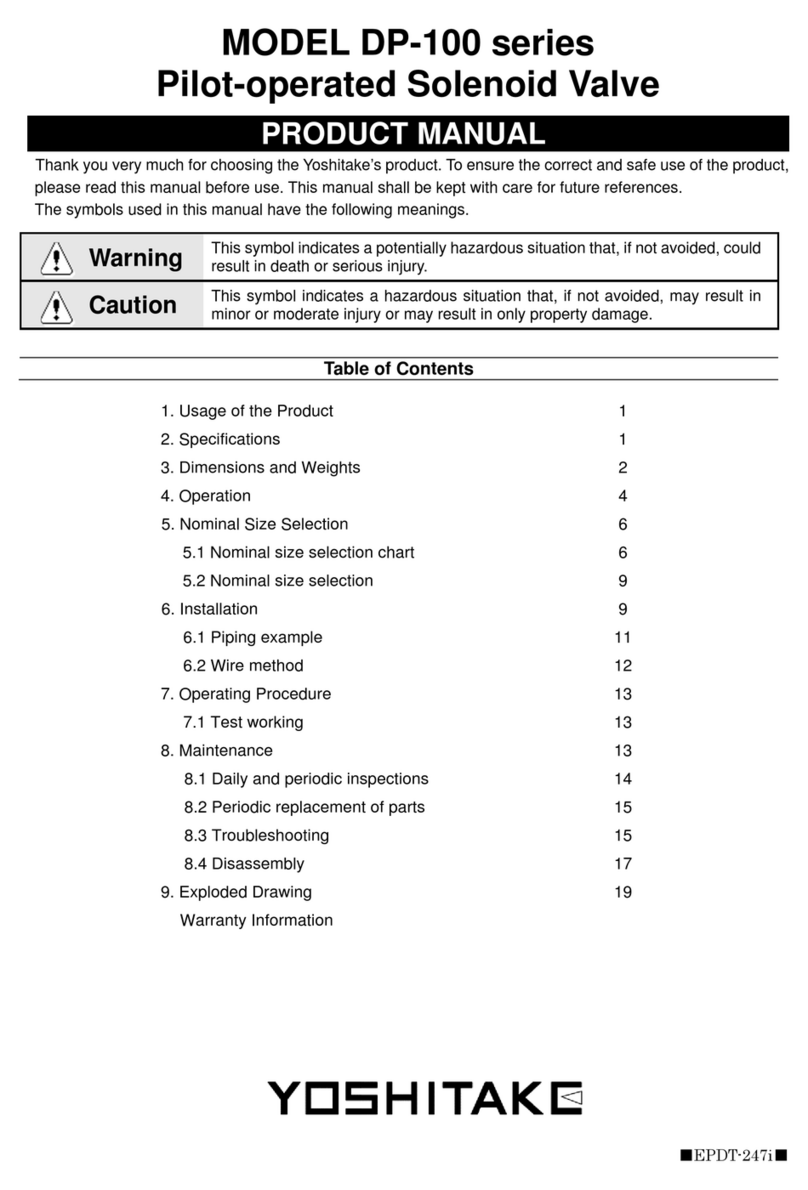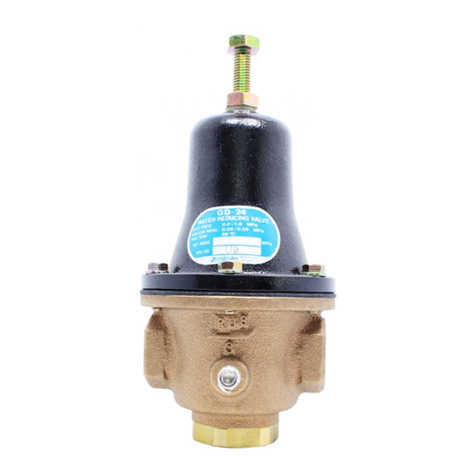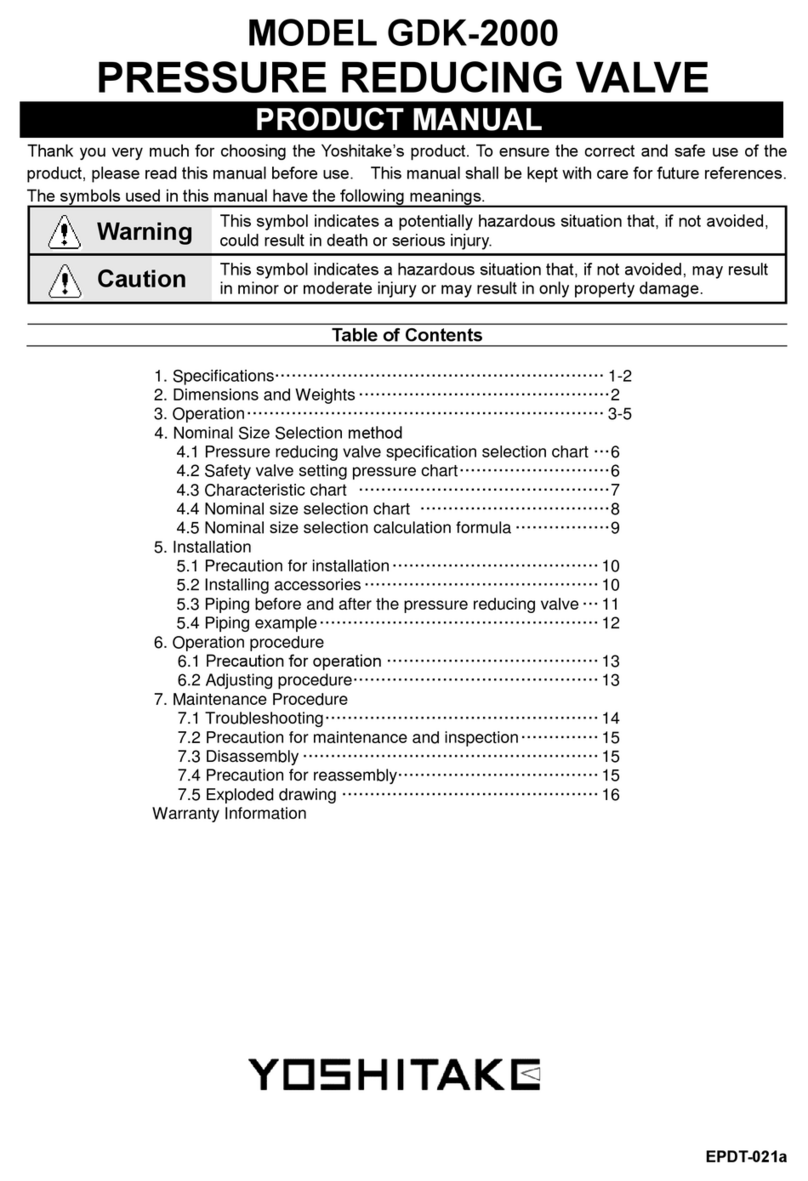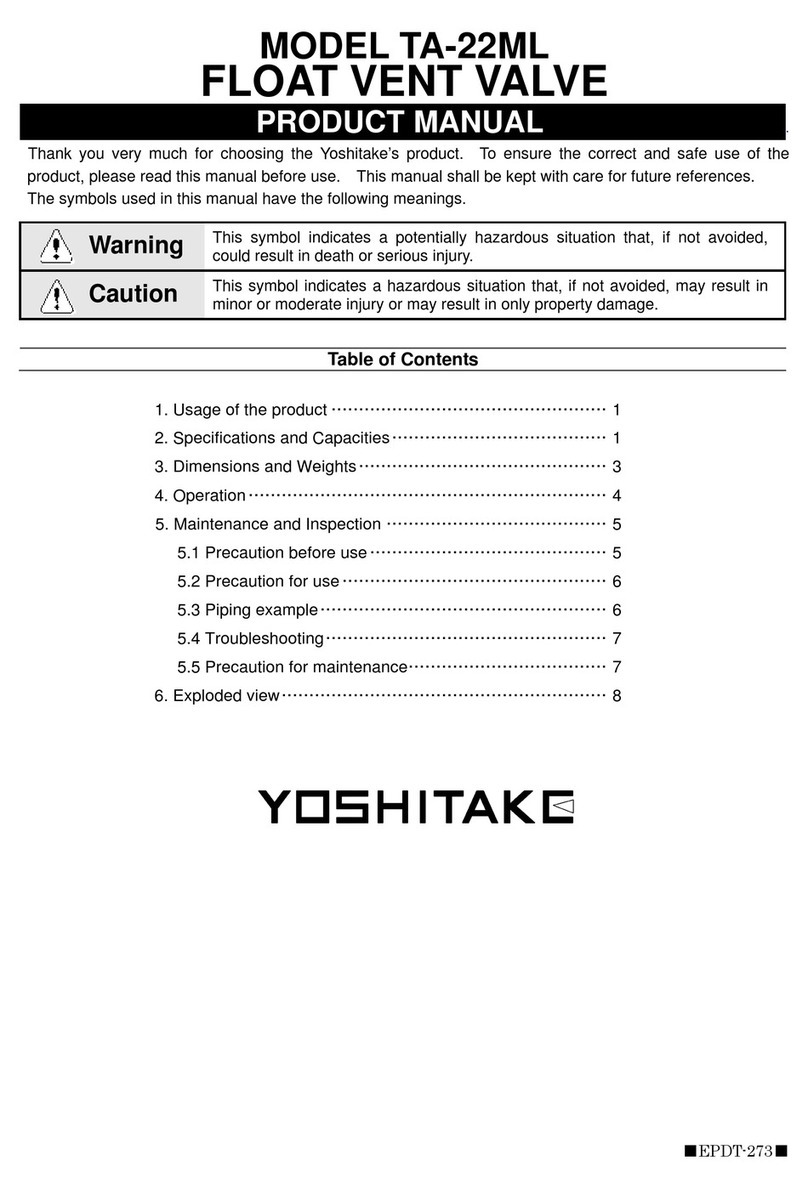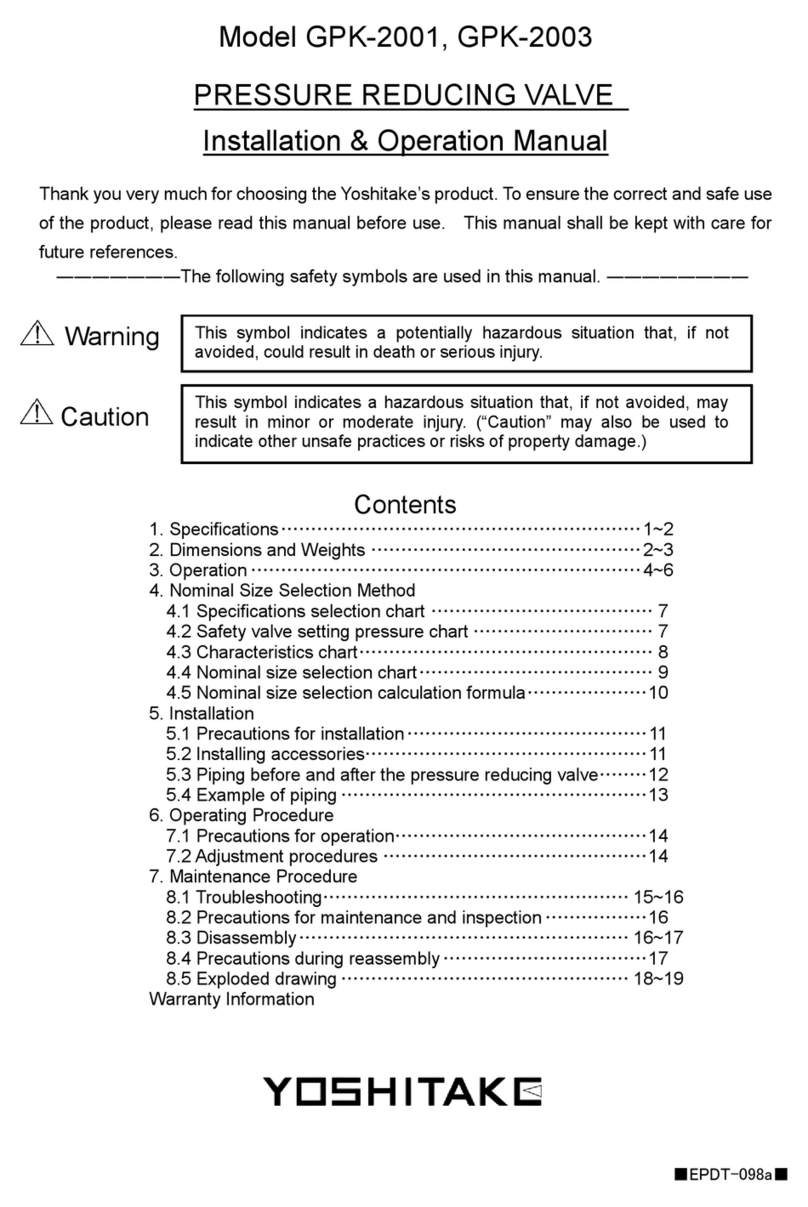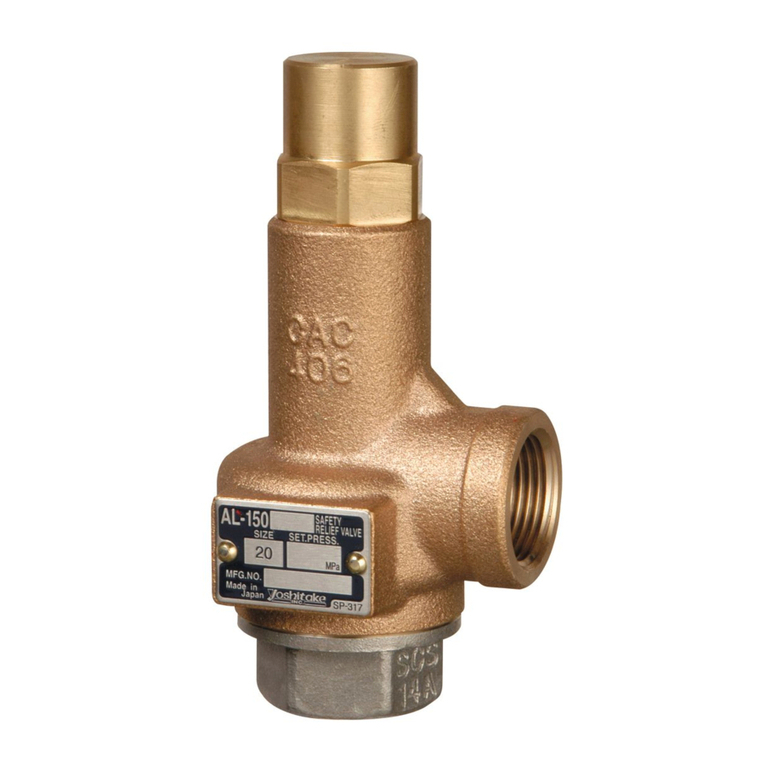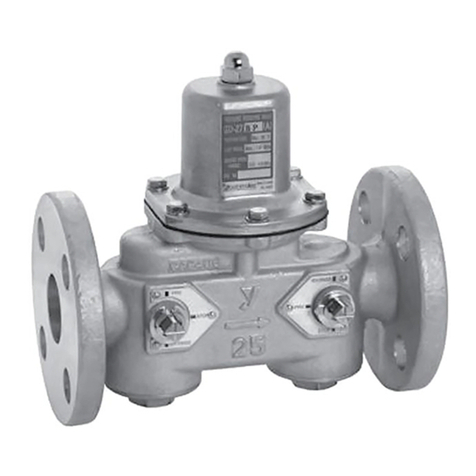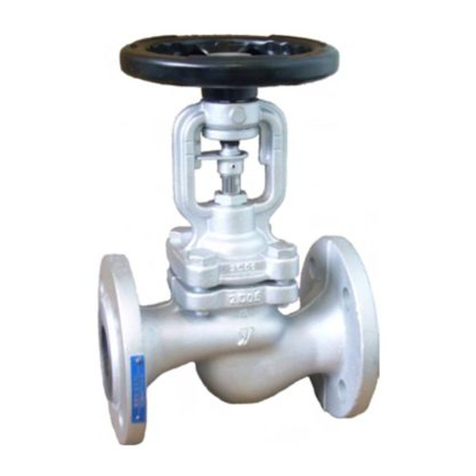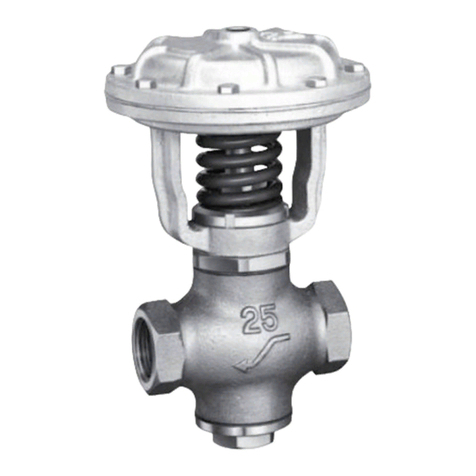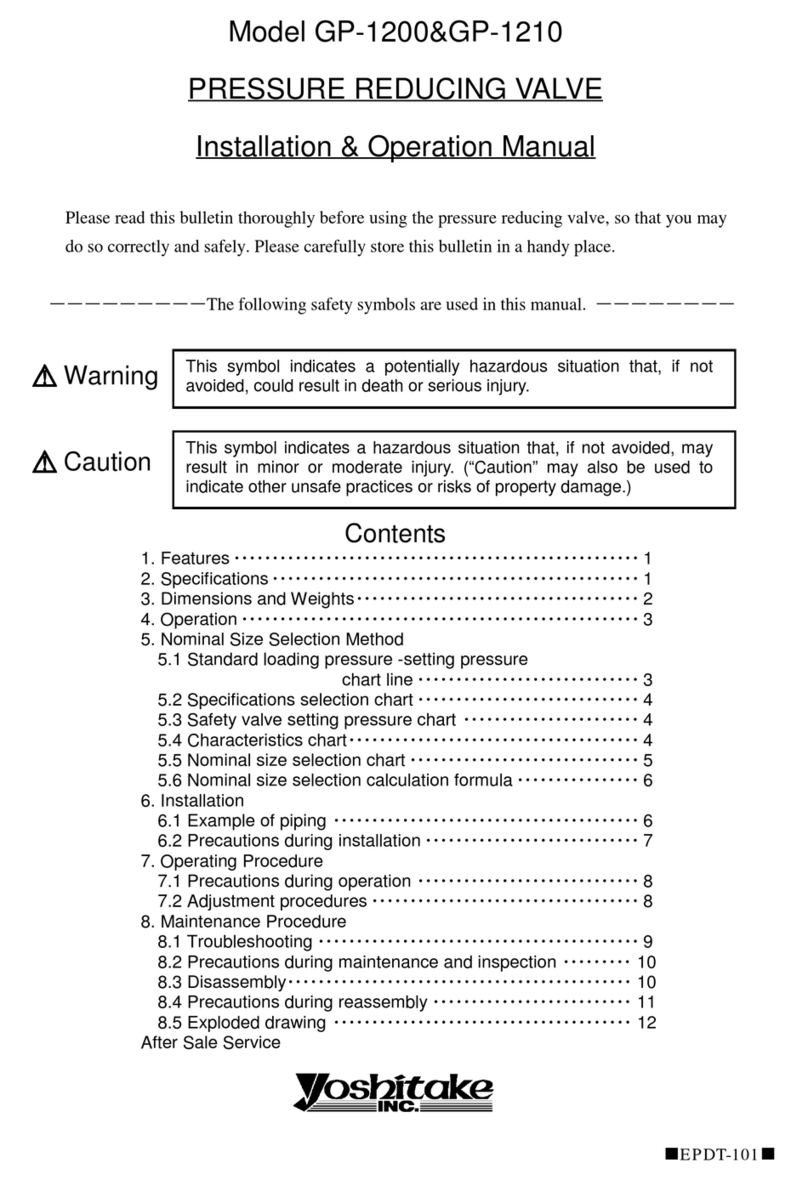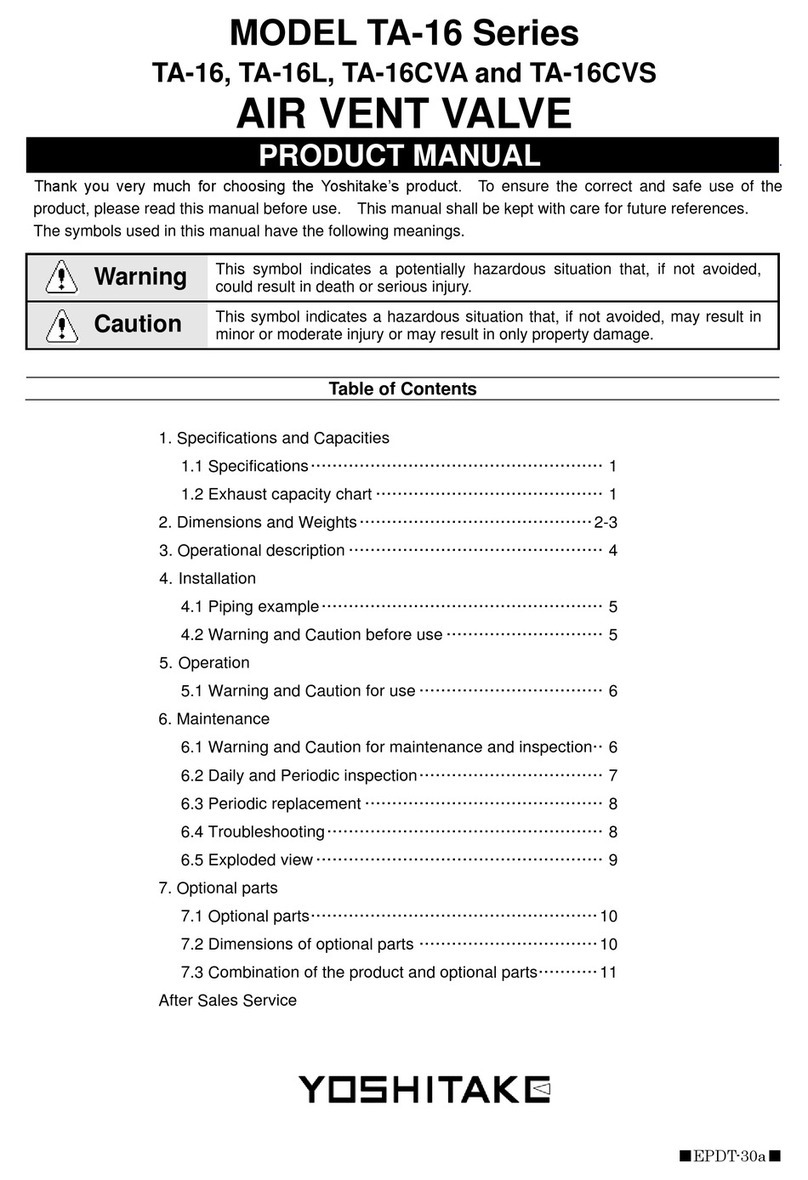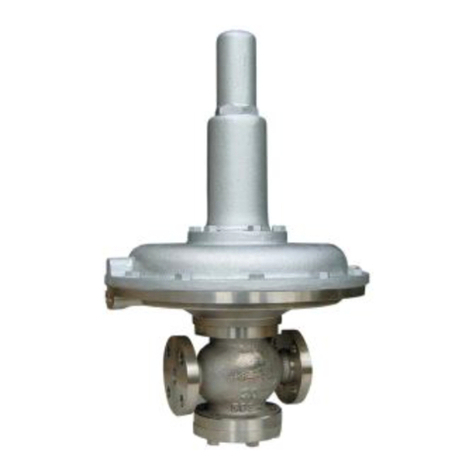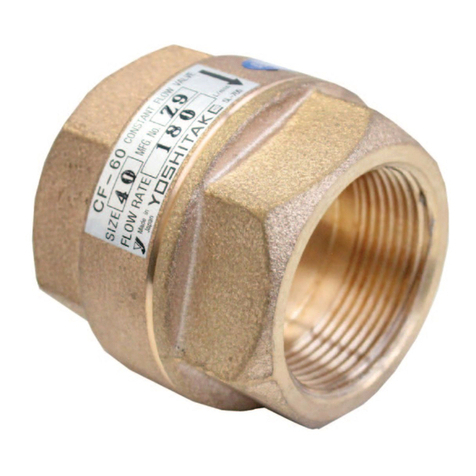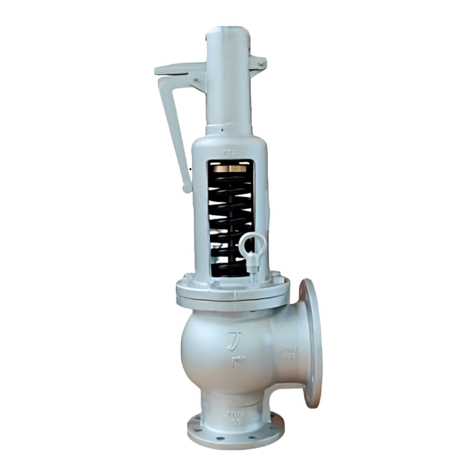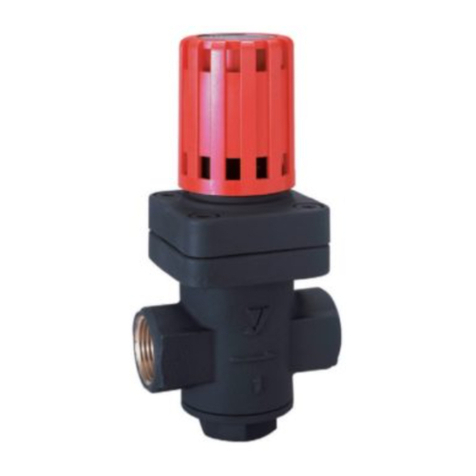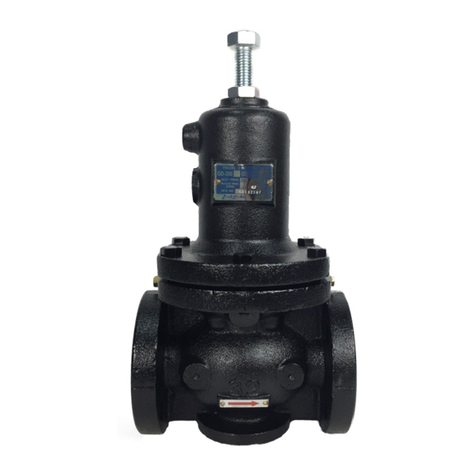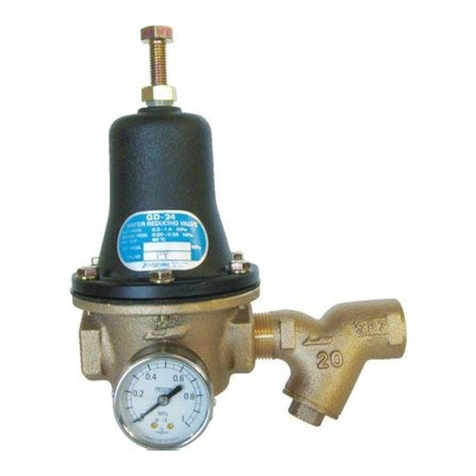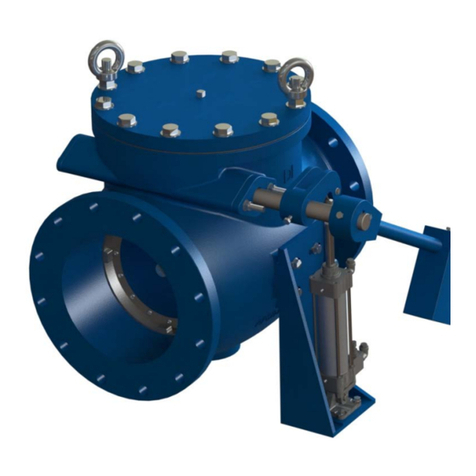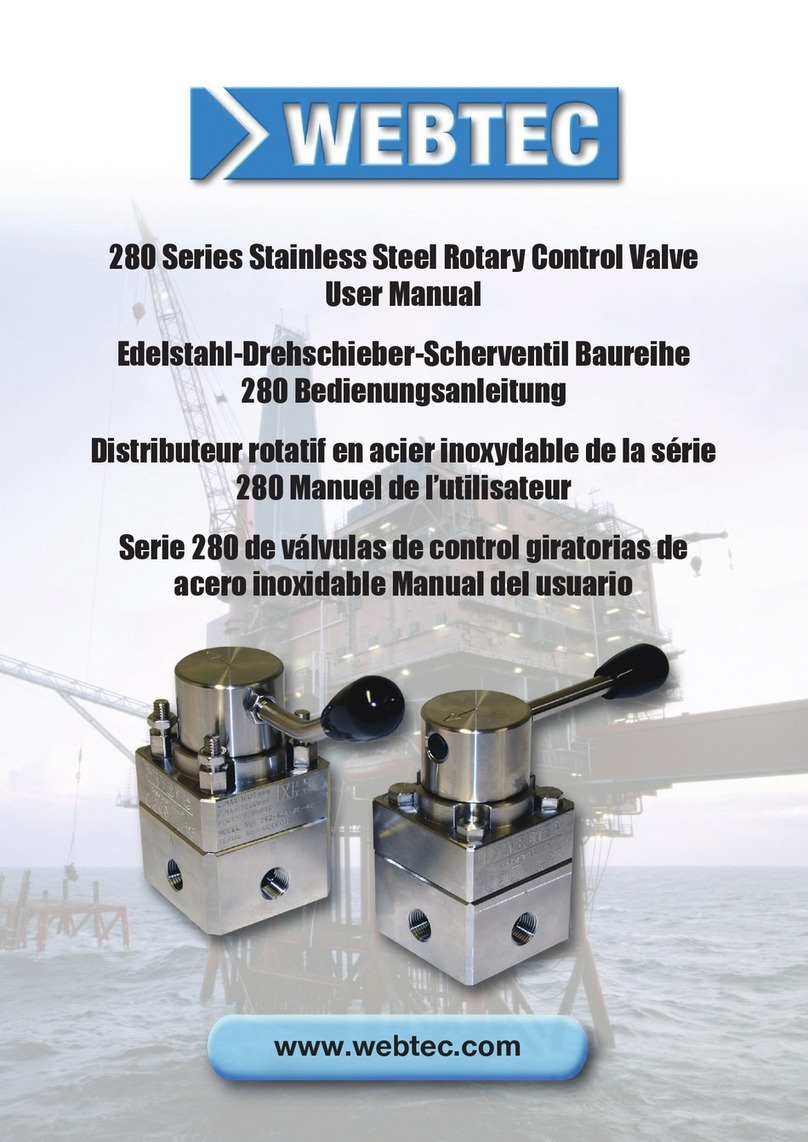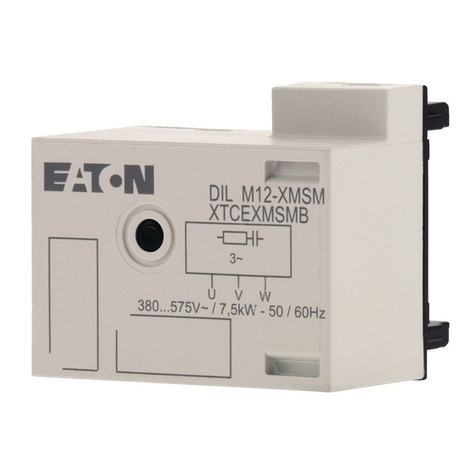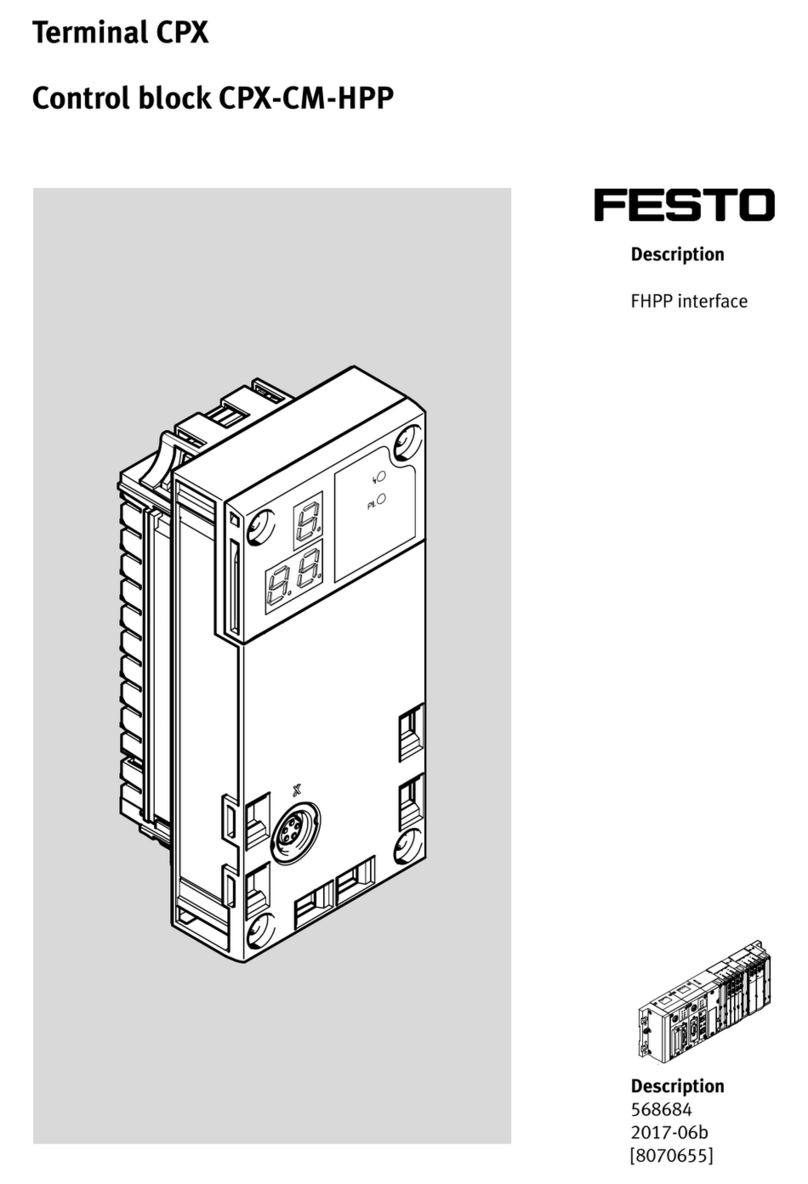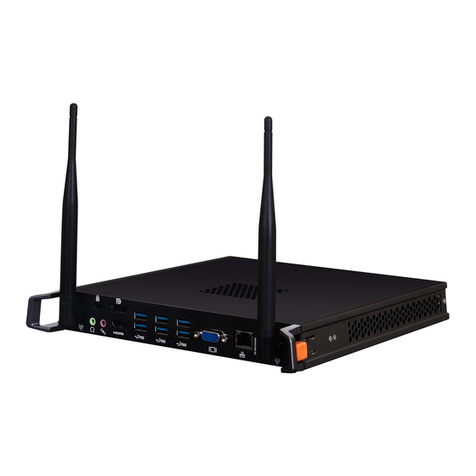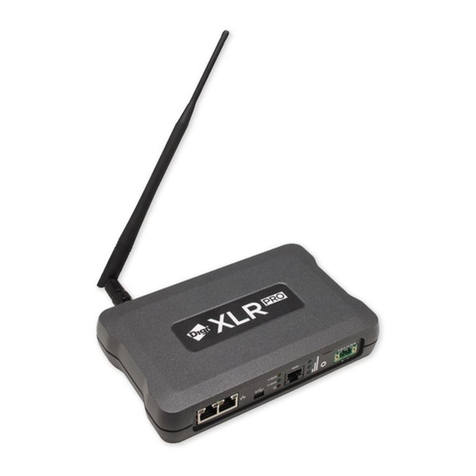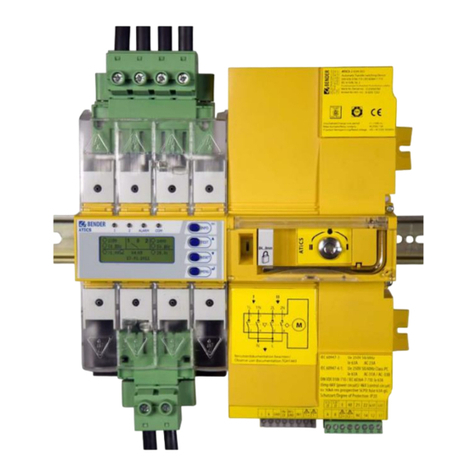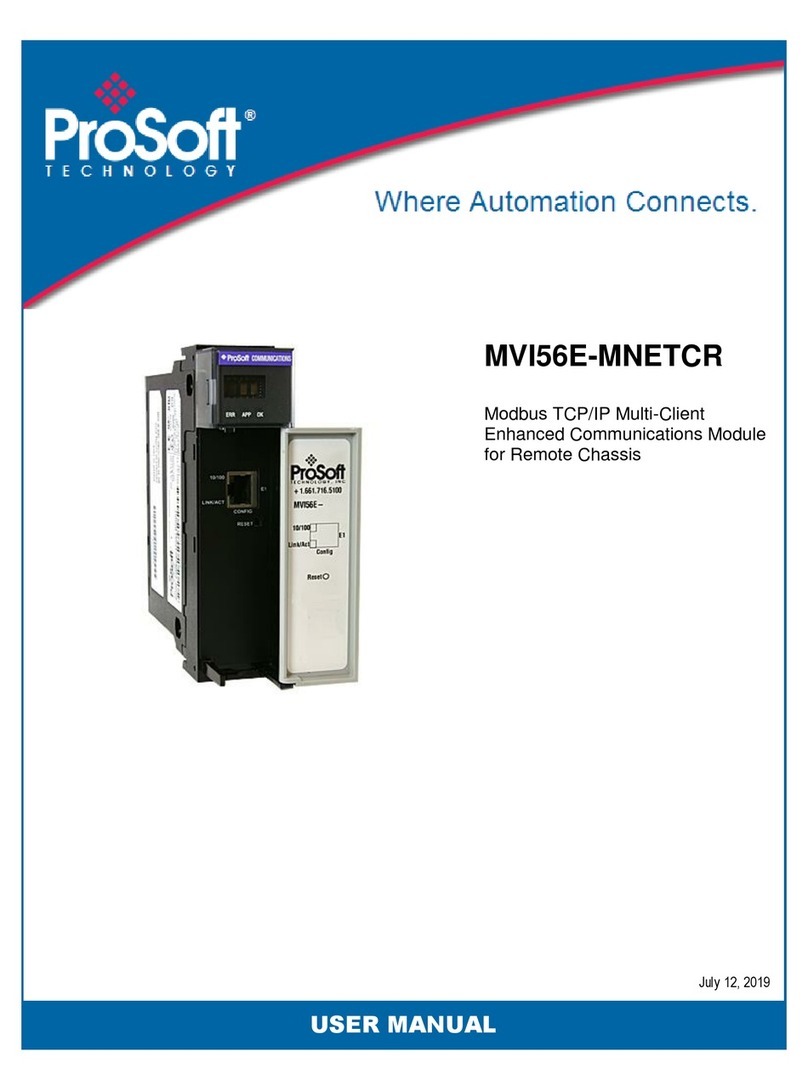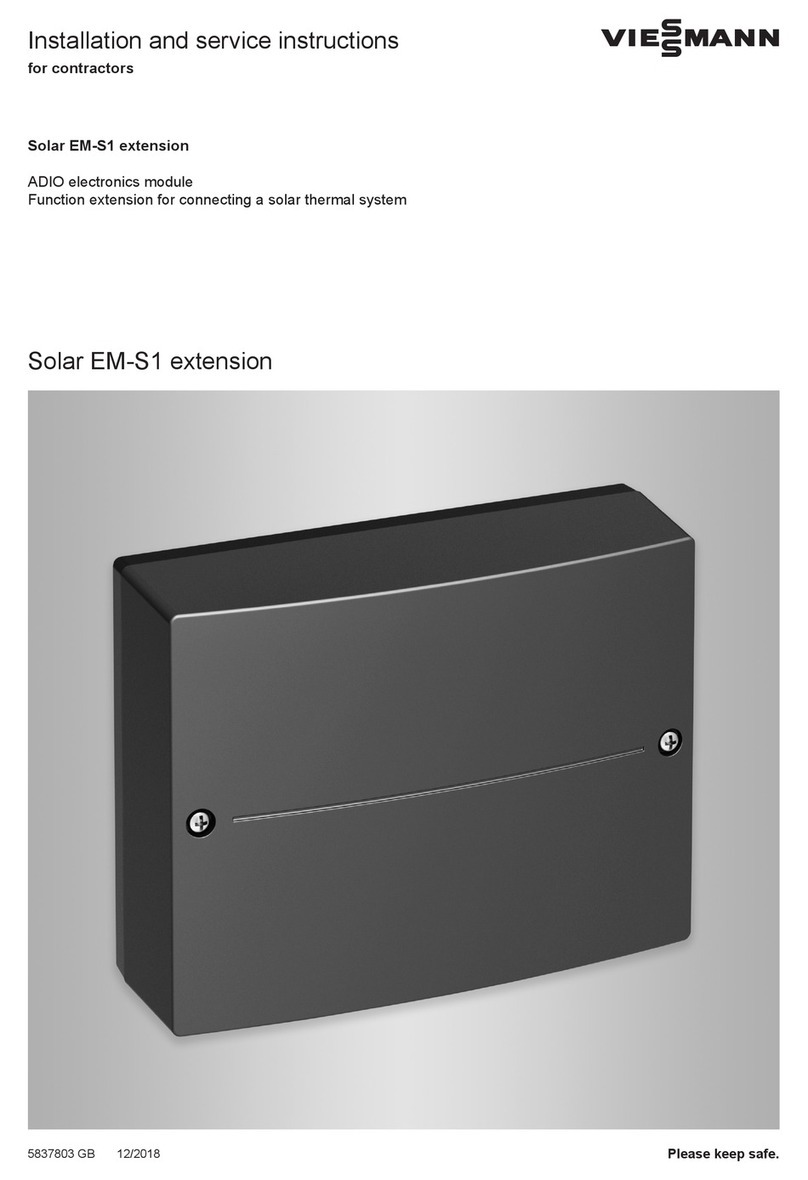
9 EPDT-089a
5.4 Adjusting procedure
Following a wrong adjusting procedure may cause hunting, scale problems or other problem, and can
heavily damage the main parts of the valve. To avoid these problems, be sure to follow the procedure
given below
1. Close the stop valves at the inlet and outlet sides of the reducing valve, and take adequate time to
blow out fluid by using a bypass line. In doing this, adjust the opening of the globe valve in the by-
pass pipe so as not to blow out the safety relief valve.After the end of blowing, close the globe valve
without fail.
2. Fully open the stop valve at the inlet side slowly, and open the stop valve at the outlet side so that a
little fluid can flow through.
3. Remove the domed cap nut and turn the adjusting screw [14] while watching the pressure gauge at
the outlet side.
•Turn the adjusting screw to the right (clockwise) to increase the reduced pressure.
•Turn the adjusting screw to the left (counterclockwise) to decrease the reduced pressure.
4. Fully open the stop valve at the outlet side slowly.
5. After the adjustment is complete, tighten the domed cap nut.
5.5 Troubleshooting
Trouble Cause Remedy
Abnormal pressure
rise at the outlet side.
1. Foreign substances stuck between
the disc [8] and the valve seat [3], or
scratch on them.
1. Disassemble the product and remove
the foreign substances. If scratch is
observed on the valve disc or valve
seat, replace it.
2. The O-ring [6] is damaged. 2. Replace the O-ring.
3. The diaphragm [9] is damaged. 3. Replace the diaphragm.
4. There is a leakage from the globe
valve of the by-pass line. 4. Repair or replace the globe valve.
Reduced pressure
does not reach the
desired value.
1. The working pressure is improper. 1. Correct the working pressure. (See
“2.1 Specifications” on Page 1.)
2. The nominal size of the product is
too small for the flow rate for use. 2. Replace the product with the proper
nominal size.
3. Pressure adjustment is improper. 3. Readjust the pressure in accordance
with the given procedure.
4. Strainer built in the product is
clogged. 4. Clean the strainer.
5. Pressure gauge is broken. 5. Replace pressure gauge.
Abnormal sound
1. The nominal size of the product is
too large for the specifications of the
system.
1. Replace the product with the proper
nominal size. (See “2.2 Nominal size
selection” on Page 2.)
2. The pressure reduction ratio is too
large or the maximum pressure
difference is exceeded.
2. Reduce pressure in two stages. (See
“2.1 Specifications” on Page 1)
3. A quick operating valve is located
near the product. 3. Keep a distance between them as
large as possible.
Most of problems with the pressure reducing valve are caused by foreign substances and scale in the
piping. Avoid the ingress of dust and dirt to the product with caution.
A phenomenon similar to valve failure could occur due to the failure of the pressure gauge, leakage or
insufficient tightening of the globe valve in the by-pass line, clogging of the strainer, and other causes.
Check the above possible causes and take a proper remedy and preventive measures.













